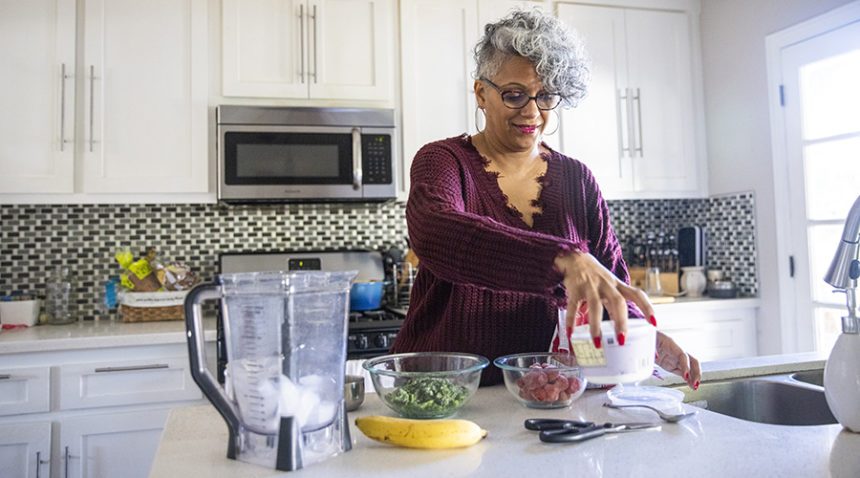More than half of us, if we live to age 60, will develop diverticulosis. This is a condition in which small pockets that bulge outward, called diverticula, develop in the wall of the colon.
The good news is that most people with diverticulosis will never experience any symptoms. They would never even know they have diverticula until one or more are found during a colonoscopy, and most people have their first colonoscopy around age 45.
Only about 1 to 4 percent of people with diverticulosis will go on to develop diverticulitis, which is when these small pouches become inflamed and sometimes infected. Diverticulitis can cause severe pain and in rare cases can become life-threatening, says Anne Peery, MD, a gastroenterologist at UNC Health and a digestive diseases researcher in the UNC School of Medicine.
“Nationwide, diverticulitis is a very common cause of clinic visits, emergency department visits and hospitalizations,” Dr. Peery says.
Diverticulitis is estimated to affect about 180 out of every 100,000 people in the U.S. Each year there are more than 1.9 million outpatient visits and more than 200,000 hospital admissions for diverticulitis.
What Causes Diverticulosis and Diverticulitis?
For decades, starting in the 1960s, physicians and scientists thought that eating a low-fiber diet increased a person’s risk of diverticulosis, and that eating a high-fiber diet decreased their risk. For that reason, doctors often recommended a high-fiber diet to their patients. Many patients were also advised to take fiber supplement pills or powders.
But a study led by Dr. Peery published in 2012 found the opposite to be true: Eating a diet high in fiber actually raised the risk of developing diverticulosis. In addition, study participants who had the lowest fiber intake were 30 percent less likely to develop diverticula than those with the highest fiber intake. These results were based on data from more than 2,000 patients ages 30 to 80 who had an outpatient colonoscopy performed at UNC Hospitals.
These findings don’t mean that fiber shouldn’t be a valuable part of your diet.
Further research has found there is no single cause or simple explanation for why diverticula develop.
“That’s a really important point for patients with diverticulitis to understand,” Dr. Peery says. “Many of them feel that this happened to them because of some failure on their part. But it’s a really complicated disease, and they didn’t do this to themselves. I want them to know that.”
What to Eat During an Acute Phase of Diverticulitis
Symptoms of diverticulitis include lower abdominal pain and tenderness, nausea and vomiting, fever, and constipation or diarrhea.
If you’re experiencing an acute case of diverticulitis, your doctor is likely to advise consuming low-fiber foods. You’ll often start with a clear liquid diet for the first few days. This includes clear broths (but not soup), juices, gelatin, popsicles and water. Many patients report a reduction in pain on a clear liquid diet, Dr. Peery says.
As you begin to feel better, you can gradually begin eating bland, starchy foods that are easy to digest. The BRAT diet—bananas, rice, applesauce and toast (made with white bread, not whole wheat)—can be a good next step. Then you can move on to low-fiber starches such as potatoes (without the skin), soft proteins (such as eggs, tofu, shredded chicken and ground beef), canned fruits (without the skins) or dairy products such as cottage cheese and yogurt.
What to Eat When the Acute Phase of Diverticulitis Is Over
Once people recover from the acute phase of diverticulitis, meaning their symptoms have resolved, it is important for them to eat strategically to try to prevent a recurrence. This means a diet that is high in fiber from fruits, vegetables, whole grains and legumes, and low in red meats and sweets.
Managing your diet is one way to try to reduce risk, but it’s also possible to eat a healthy diet and still have a recurrence, Dr. Peery says. “We don’t want to reinforce the false narrative that people eat unhealthy food and therefore develop diverticulitis.”
Other things you can do that help reduce your risk of diverticulitis include achieving and maintaining a healthy body weight, being physically active, not smoking, and avoiding the use of non-steroidal anti-inflammatory medications (such as ibuprofen) more than once a week. Researchers now think that about half of a person’s risk for diverticulitis may be attributable to genetic factors.
As long as you are not in the acute phase of diverticulitis, it’s OK to eat nuts, corn and popcorn. It’s also OK to eat small fruits with seeds, such as strawberries and blueberries. Research has found that these foods are not associated with an increased diverticulitis risk.
If you’re struggling with digestive problems, talk to your doctor or find a gastroenterologist near you.

